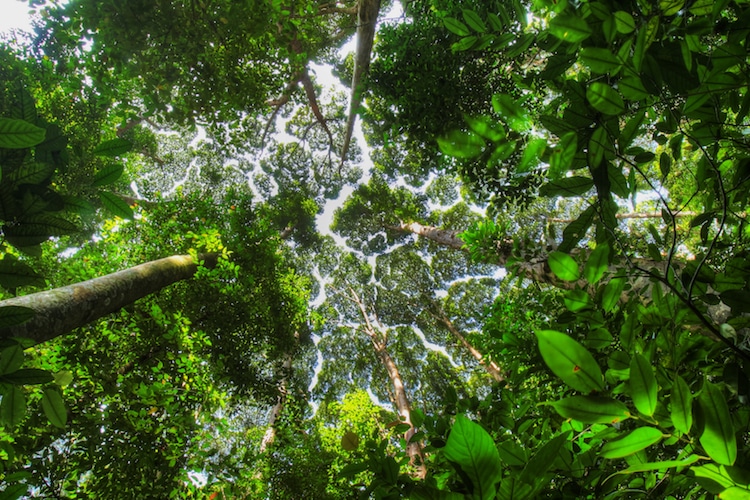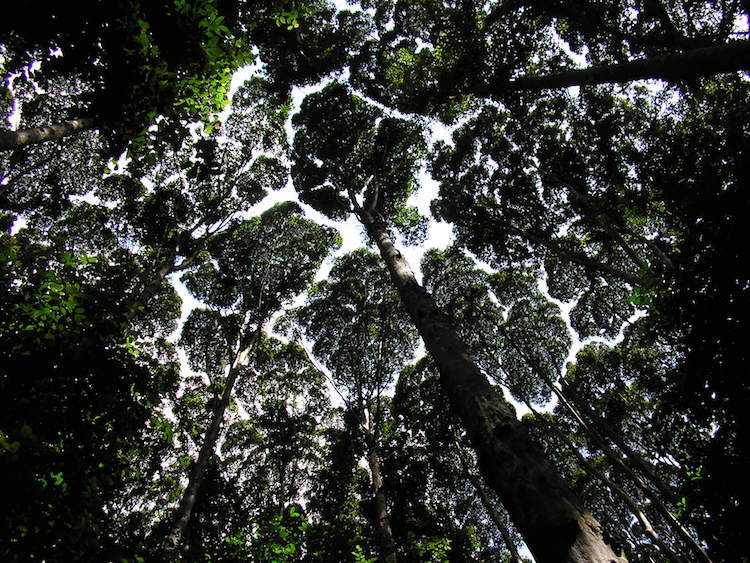Crown shyness, a captivating phenomenon observed in certain tree species, manifests as a peculiar tendency where adjacent trees inexplicably avoid touching each other, resulting in a distinctive gap between their crowns that forms a visually striking pattern in the forest canopy.
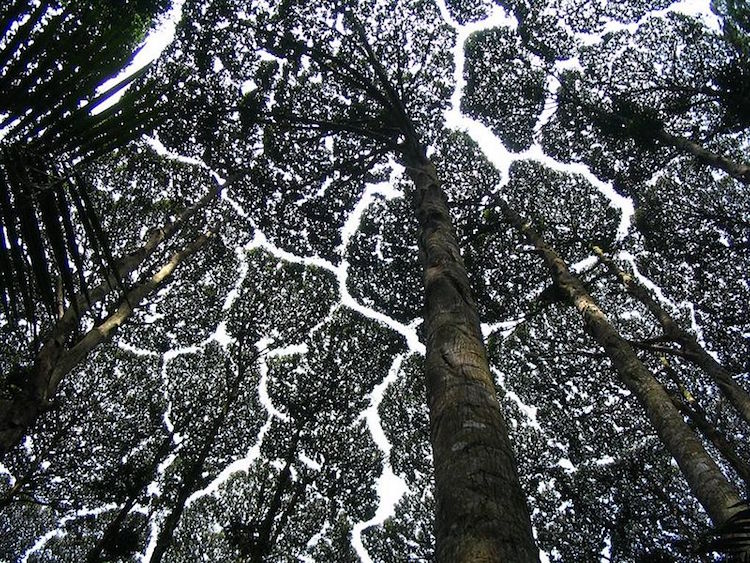
When you cast your eyes upward towards towering trees like eucalyptus, Sitka spruce, and Japanese larch, you’ll notice an intriguing aspect: the uppermost branches do not make contact. This natural occurrence is known as “crown shyness,” creating rupture-like patterns in the forest canopy that precisely outline the beautiful silhouettes of the trees.

This phenomenon has been documented among trees of the same and different species worldwide since scientists first delved into the issue in the 1920s. Regardless of the tree species or habitat, crown shyness exhibits consistent features, with gaps resembling meandering channels, zigzagging fractures, and winding rivers.
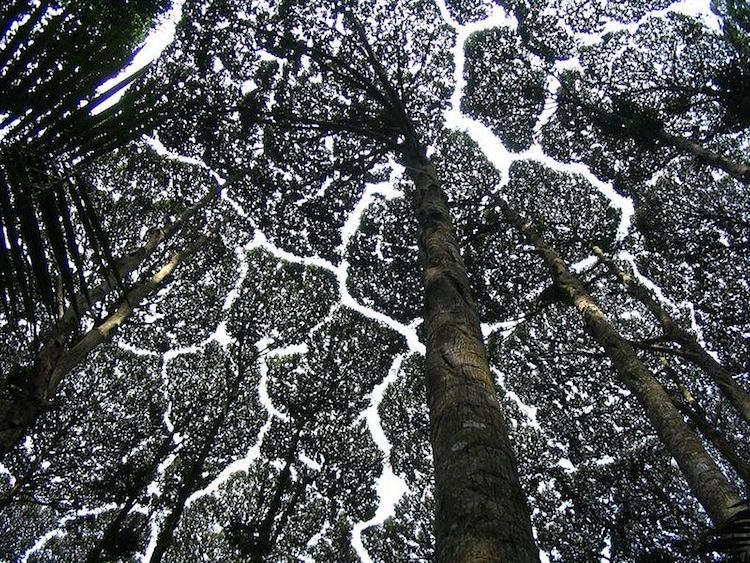
Although the exact reasons behind this behavior remain uncertain, several theories have been proposed by experts. One theory suggests that it occurs when tree branches, particularly those in high-wind locations, collide with each other. Another posits that it allows perennial plants to receive optimal light for photosynthesis. However, the most widely accepted hypothesis is that these gaps serve as a barrier, preventing invading insects from spreading.
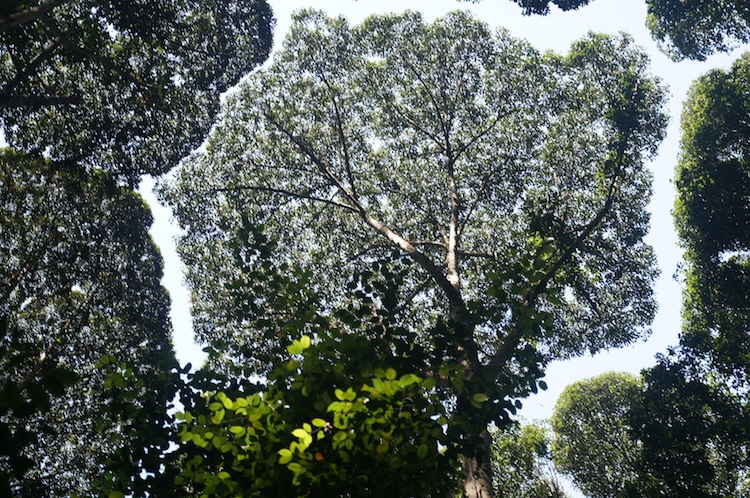
Whatever the cause of this unique treetop occurrence, one thing is certain: crown shyness is a highly photogenic condition! It creates crack-like spaces in the tree canopy, forming a natural and visually appealing spectacle.
